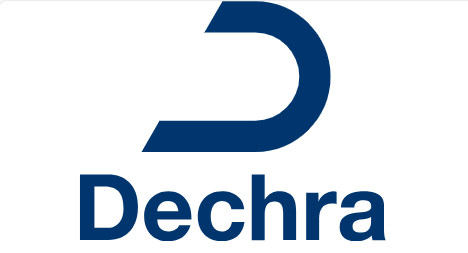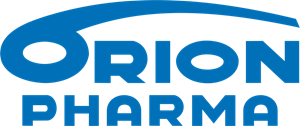Combination therapy
No results were found for your selected species
Parofor
Active substance
ATC code
Species
Cattle (pre-ruminant), pigs.
Indications
Treatment of gastro-intestinal infections caused by Escherichia coli.
Dose to be administered and administration route
In drinking water/milk use Cattle (pre-ruminant):
For administration in milk/milk replacer
17500 – 35000 IU of paromomycin per kg BW/day (equivalent to 2.5-5 g of veterinary medicinal product/10 kg BW/day)
Duration of treatment: 3-5 days
Pigs:
For administration in drinking water.
17500 – 28000 IU of paromomycin per kg BW/day (equivalent to 2.5-4 g of veterinary medicinal product/10 kg BW/day)
Duration of treatment: 3-5 days
To ensure a correct dosage, body weight should be determined as accurately as possible.
The use of suitably calibrated measuring equipment is recommended.
Based on the recommended dose and the number and weight of animals to be treated, the exact daily concentration of the veterinary medicinal product should be calculated according to the following formula:
| mg veterinary medicinal product / kg body weight / day | x | mean body weight (kg) of animals to be treated | = | .... mg veterinary medicinal product per litre drinking water/milk/milk replacer |
| Mean daily water/milk/milk replacer consumption (l/animal) | ||||
The intake of medicated water/milk /milk replacer depends on several factors including the clinical conditions of the animals and the local conditions such as ambient temperature and humidity. In order to obtain the correct dosage, drinking water/milk/milk replacer uptake has to be monitored and the concentration of paromomycin may need to be adjusted accordingly.
Medicated drinking water/milk/milk replacer and any stock solutions should be freshly prepared. Any remaining quantities of medicated fluids should be removed after 6 hours (in milk/milk replacer) or after 24 hours (in water).
For the administration of the veterinary medicinal product commercially available dosing pumps can be used. The solubility of the veterinary medicinal product has been tested at the maximum concentration of 95 g/L.
Adverse reactions
Cattle (pre-ruminant), pigs:
|
Rare (1 to 10 animals / 10,000 animals treated): |
Loose stool |
|
Undetermined frequency (cannot be estimated from available data) |
Nephropathy 1 Internal ear disorder1 |
1Aminoglycoside antibiotics such as paromomycin can cause nephro- and ototoxicity.
Reporting adverse events is important. It allows continuous safety monitoring of a veterinary medicinal product. Reports should be sent, preferably via a veterinarian, to either the marketing authorisation holder or the national competent authority via the national reporting system. See section ‘Contact details’ of the the package leaflet for respective contact details.
Dispensing
POM-VEMA Categorisation
SUMMARY OF PRODUCT CHARACTERISTICS
1. NAME OF THE VETERINARY MEDICINAL PRODUCT
Parofor 70 000 IU/g powder for use in drinking water, milk or milk replacer for preruminant cattle and pigs.
2. QUALITATIVE AND QUANTITATIVE COMPOSITION
Per 1 gram:
Active substance:
70 000 IU of paromomycin activity (as paromomycin sulfate)
Excipients:
For the full list of excipients, see section 6.1.
3. PHARMACEUTICAL FORM
Powder for use in drinking water, milk or milk replacer A white to almost white powder.
4. CLINICAL PARTICULARS 4.1 Target species
Cattle (pre-ruminant calves), pig.
4.2 Indications for use, specifying the target species
Treatment of gastro-intestinal infections caused by Escherichia coli susceptible to paromomycin.
4.3 Contraindications
Do not use in cases of hypersensitivity to paromomycin, other aminoglycosides or any of the excipients.
Do not use in cases with impaired function of the kidneys or liver.
Do not use in ruminating animals.
Do not use in turkeys due to the risk of selection for antimicrobial resistance in intestinal bacteria.
4.4 Special warnings for each target species
None.
4.5 Special precautions for use
Special precautions for use in animals
The uptake of medication by animals can be altered as a consequence of illness. In case of insufficient uptake of water/milk animals should be treated parenterally using a suitable injectable product following the advice of the veterinarian.
The use of the product should be combined with good management practices e.g. good hygiene, proper ventilation, no overstocking.
Since the product is potentially ototoxic and nephrotoxic, it is recommended to assess kidney function.
Special care should be taken when considering administration of the product to newborn animals due to the known higher gastrointestinal absorption of paromomycin in neonates. This higher absorption could lead to an increased risk of oto-and nephrotoxicity. The use of the product in neonates should be based on benefit-risk assessment by the responsible veterinarian. Prolonged or repeated use of the product should be avoided by improving management practices and through cleansing and disinfection.
Use of the product should be based on susceptibility testing of the bacteria isolated from the animal. If this is not possible, therapy should be based on local (regional, farm level) epidemiological information about susceptibility of the target bacteria. Official, national and regional antimicrobial policies should be taken into account when the product is used.
Use of the product deviating from the instructions given in the SPC may increase the prevalence of bacteria resistant to paromomycin and may decrease the effectiveness of treatment with aminoglycosides due to the potential for crossresistance.
Aminoglycosides are considered as critical in human medicine. Consequently, they should not be used as a first line treatment in veterinary medicine.
Special precautions to be taken by the person administering the veterinary medicinal product to animals
This product contains paromomycin, which can cause allergic reactions in some people. Anyone with known hypersensitivity (allergy) to aminoglycosides should avoid contact with the veterinary medicinal product. If you develop symptoms following exposure, such as skin rash, you should seek medical advice and show the physician this warning. Swelling of the face, lips and eyes or difficulty in breathing are more serious symptoms and require urgent medical attention.
Personal protective equipment consisting of protective clothing and impervious gloves should be worn when handling the veterinary medicinal product.
Do not eat, drink and smoke when handling the product. Wash hands after use. In case of accidental ingestion, seek medical advice immediately and show the package leaflet or label to the physician.
When handling this product, inhalation of the dust must be avoided by wearing a disposable half-mask respirator conforming to European Standard EN 149 or a nondisposable respirator to European Standard EN 140 with a filter to EN 143.
Use in a well-ventilated area. Avoid inhaling the powder while preparing the medicated water or milk replacer. Avoid contact with the skin and eyes. In the event of accidental contact with the skin or eyes, rinse with plenty of water and seek medical attention if irritation persists.
4.6 Adverse reactions (frequency and seriousness)
Aminoglycoside antibiotics such as paromomycin can cause oto- and nephrotoxicity.
On rare occasions soft faeces has been observed.
The frequency of adverse reactions is defined using the following convention:
- very common (more than 1 in 10 animals treated displaying adverse reaction(s))
- common (more than 1 but less than 10 animals in 100 animals treated)
- uncommon (more than 1 but less than 10 animals in 1,000 animals treated)
- rare (more than 1 but less than 10 animals in 10,000 animals treated)
- very rare (less than 1 animal in 10,000 animals treated, including isolated reports).
4.7 Use during pregnancy, lactation or lay
Laboratory studies in rat and rabbit have not produced any evidence of teratogenic, foetoxic or maternotoxic effects. The use is not recommended during the pregnancy. 4.8 Interaction with other medicinal products and other forms of interaction
General anaesthetics and muscle relaxants increase the neuro-blocking effect of aminoglycosides, which can lead to acute paralysis and apnoea.
Do not use concurrently with loop diuretics and potentially oto- or nephrotoxic substances.
4.9 Amounts to be administered and administration route
Oral use
Pre-ruminant cattle: administration in milk/milk replacer Pigs: administration in drinking water.
Duration of treatment: 3-5 days
Pre-ruminant cattle: 17500 – 35000 IU per kg BW/day (equivalent to 2.5-5 g of product/10 kg BW/day)
Pigs: 17500 – 28000 IU per kg BW/day (equivalent to 2.5-4 g of product/10 kg BW/day)
For the administration through the drinking water milk or milk replacer, the exact daily amount of product should be calculated, based on the recommended dose, and the number and weight of the animals to be treated, according to the following formula:
mg product / kg x Mean body weight
body weight / (kg) of animals to be
day treated = .... mg product per litre
![]()
Mean daily water/milk/milk replacer drinking water /milk/milk consumption (litre) per animal replacer
To ensure a correct dosage body weight should be determined as accurately as possible.
The uptake of medicated water/milk /milk replacer depends on several factors including clinical conditions of the animals and the local conditions such as ambient temperature and humidity.
In order to obtain the correct dosage, drinking water/milk/milk replacer uptake has to be monitored and the concentration of paromomycin has to be adjusted accordingly. Medicated drinking water/milk/milk replacer and any stock solutions should be freshly prepared. Any remaining quantities of medicated fluids should be removed after 6 hours (in milk/milk replacer) or 24 hours (in water).
To assure administration of the exact daily amount of product suitably calibrated weighing equipment should be used.
For the administration of the product commercially available dosing pumps can be used. The solubility of the product has been tested at the maximum concentration of 95 g/L.
4.10 Overdose (symptoms, emergency procedures, antidotes), if necessary
Paromomycin when administered orally is hardly absorbed systemically. Harmful effects due to accidental overdosing are highly unlikely.
4.11 Withdrawal period(s)
Pre-ruminant cattle
Meat and offal: 20 days Pig
Meat and offal: 3 days
5. PHARMACOLOGICALPROPERTIES
Pharmacotherapeutic group: intestinal antiinfectives; antibiotics. ATC vet code: QA07AA06.
5.1 Pharmacodynamic properties
Paromomycin belongs to the group of aminoglycoside antibiotics. Paromomycin changes the reading of messenger-RNA, which disrupts protein synthesis. The bactericidal activity of paromomycin is mainly attributed to its irreversible binding to ribosomes. Paromomycin has broad spectrum activity against numerous Grampositive and Gram-negative bacteria, including E. coli.
Paromomycin acts in a concentration-dependant manner. Five mechanisms of resistance have been identified: changes of the ribosome due to mutations, reduction of permeability of bacterial cell wall or active efflux, inactivation of aminoglycosides by enzymes and enzymatic substitution of the molecular target. The first three resistance mechanisms arise from mutations of certain genes on chromosomes. The fourth and fifth resistance mechanisms only occurs following intake of a transposon or plasmid coding for resistance. Paromomycin selects for resistance and crossresistances at high frequency against a variety of other aminoglycosides among intestinal bacteria.
5.2 Pharmacokinetic properties
Following oral administration of paromomycin, hardly any absorption takes place and the molecule is eliminated unchanged via the faeces.
5.3 Environmental properties
The active ingredient paromomycin sulfate is very persistent in the environment.
6. PHARMACEUTICAL PARTICULARS
6.1 List of excipients
Silica, colloidal anhydrous Glucose monohydrate
6.2 Major incompatibilities
In the absence of compatibility studies, this veterinary medicinal product must not be mixed with other veterinary medicinal products.
6.3 Shelf life
Shelf-life of the veterinary medicinal product as packaged for sale: 2 years.
Shelf life after first opening the immediate packaging: 6 months.
Shelf life after reconstitution in drinking water: 24 hours
Shelf life after reconstitution in milk/milk replacer: 6 hours
6.4 Special precautions for storage
Store below 25°C.
Keep the sachet tightly closed.
6.5 Nature and composition of immediate packaging
Block-bottom polyethylene/aluminium/polyethylene terephthalate sachet of 1000 g - 500 g – 250 g
Sachet of polyethylene foil/aluminium/polypropylene foil of 25 g, placed into a cardboard box, 40 sachets per box. Not all pack sizes may be marketed.
6.6 Special precautions for the disposal of unused veterinary medicinal product or waste materials derived from the use of such products
Any unused veterinary medicinal product or waste materials derived from such veterinary medicinal products should be disposed of in accordance with local requirements.
7. MARKETING AUTHORISATION HOLDER
Huvepharma NV
Uitbreidingstraat 80
2600 Antwerpen
Belgium
8. MARKETING AUTHORISATION NUMBER
Vm 30282/4020
9. DATE OF FIRST AUTHORISATION
17 September 2014
10. DATE OF REVISION OF THE TEXT
September 2019

Approved: 04 September 2019
 TRUSTED SOURCE
TRUSTED SOURCE









